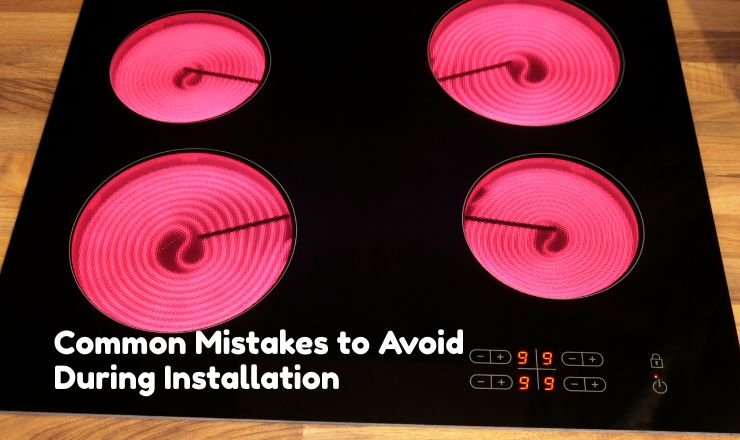Installing a new cooktop is an exciting upgrade for a kitchen, and it isn’t any different if you’re purchasing from a 60cm ceramic hob supplier. Proper installation is necessary to achieve the best performance and to ensure safety. However, many individuals often make a few simple errors that can lead to problems potentially down the track.
So, here our blog will explore and discuss the most common installation mistakes and how to avoid them.
1. Not Reading the Manufacturer’s Instructions
This might be obvious, but many people skip the manual. Every cooktop of either ceramic or induction type has a distinct specification. Top 60cm ceramic hob suppliers commonly feature detailed images and measurements in their manuals. Failing to take note of these instructions can lock you into fittings that do not work, faulty connections, and the voiding of warranties.
Tip: Always read the manual entirely before beginning the installation, and refer to this manual during the installation.
2. Improper Ventilation Setup
Cooktops generate heat and, if not ventilated properly, can develop excessive heat. Over time, that heat can damage surrounding cabinetry or appliances. Induction cooktops are cooler than ceramic cooktops, but they still require airflow underneath.
When working with a 60cm ceramic hob supplier, get the additional space required around the unit. The same applies to an induction cooktop 2-burner supplier, who will specify spacing for optimal performance.
TIP: Try to leave space around the hob and, more importantly, make sure there is a venting pathway to minimize heating.
3. Incorrect Electrical Connection
One common mistake during installation is incorrectly wiring the cooktop. Ceramic and induction cooktops always need a dedicated power line. It’s dangerous when using the wrong voltage or if you’re missing the ground.
A reputable supplier of 2-burner induction cooktops will specify the voltage and the power load. If you’re unsure about the wiring, an electrician will assist you.
4. Placing the Cooktop Too Close to Water Sources
Installing a cooktop next to a sink or dishwasher may seem convenient, but it’s a safety risk. Splashing water can cause short circuits, especially with ceramic surfaces.
Tip: Maintain a safe distance between your cooktop and water sources to reduce risk and extend the appliance’s life.
5. Not Leveling the Cooktop
Regardless of whether you are dealing with a supplier of a 60cm ceramic hob or a supplier of an induction cooktop 2 burner, your unit must sit flat. If it is tilted, then your cookware will not sit evenly, which will affect your cooking results and safety.
Tip: Use a level to check that the cooktop is perfectly horizontal before securing it into its final position.
6. Ignoring the Surroundings
Certain countertops are not heat-resistant. If the cooktop is installed on or near materials that can warp or burn, it could potentially cost a lot of money to repair them.
Tip: When considering your countertop material, surveying it against high heat is important. Always check the recommendations of your supplier before proceeding with an installation.
In The End
A correct cooktop installation means more than just being able to cook. A cooktop needs to be installed according to professional standards to ensure it is safe and durable. Regardless of whether you are buying from a 60cm ceramic hob supplier, it’s best practice to always get your cooktop installed according to professional guidelines. The extra ten minutes of installation now will save you time and money later down the line.
If in doubt, consult with a certified installer. A cooktop installed correctly makes cooking a lot easier, safer, and much more enjoyable for your family.
